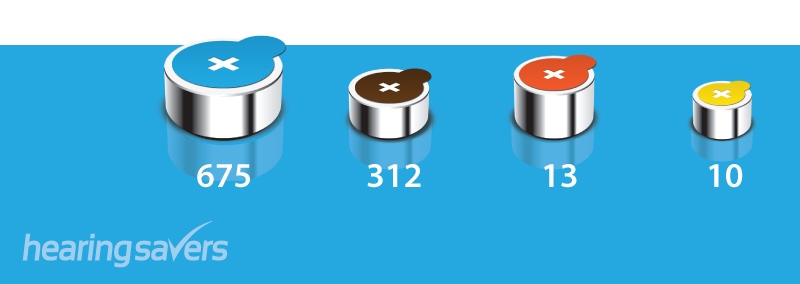Zinc-Air Battery Technology
What is zinc-air technology?
As the name implies, zinc-air technology uses oxygen from the atmosphere as an active ingredient. This technology is used almost exclusively in hearing aid battery applications. There are some other unique aspects that make zinc-air batteries different from other types of batteries.
Some of the more noticeable ones would be the need for a tab or sticker to seal the vent holes in the battery and prevent dry out. Another is that zinc-air batteries are best used soon and consistently after activation, because the battery begins to discharge as soon as that tab is removed; it is impossible to stop that discharge from occurring once you have removed that tab. Battery performance, and ultimately hearing aid performance, can be sensitive to the environment, whether we are talking about temperature or the amount of moisture in the air, known as humidity.
Why does zinc-air chemistry make sense for hearing aid batteries?
Most importantly, zinc-air batteries provide longer life and more energy than any other type of battery or cell system. That is especially important when you are talking about very small instruments like hearing aids. Other products that use button cell batteries, such as watches, do not require the same sort of power that hearing devices do. Zinc-air batteries have a much higher capacity-to-volume ratio, sometimes known as energy density, than other types of batteries.
Virtually all battery or cell systems store their positive and negative reactive components inside the cell. However, since zinc-air uses oxygen from the atmosphere as one of its reactants, it frees a large amount of internal space to allow for more zinc. The more zinc available in the battery means longer life.

Removing the sticky tab activates the battery as air enters through the holes. After the tab is removed, the battery literally requires a moment to “catch its breath.” As air starts to enter the battery, it becomes able to be activated. We always recommend that you let the battery sit for a full minute before you insert it into the device and shut the door. That is important because it allows the voltage in the battery to rise and ensure that you will not have start-up problems with the hearing aid.
Voltage is another thing that should be explained
While the packaging of batteries will state 1.45 volts, most hearing aid batteries which are tabbed on the shelf will measure anywhere from 1.1 volts to 1.3 volts when tested with a battery tester or volt meter. Once the tab is removed, the voltage rises sufficiently to power a hearing aid within one minute, but the entire cell could take as long as 24 hours to rise to the maximum 1.45 volts. Un-tabbed voltage after a maximum of one day is 1.45 volts.
The important thing to remember is that the hearing aid does not require the full 1.45 volts to operate.
























